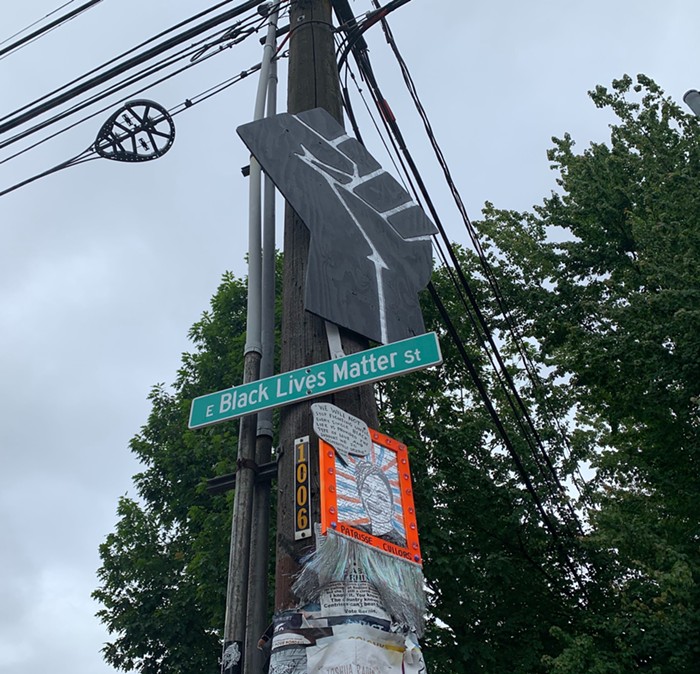
While some sculptures and painted plywood were kept for safekeeping—with a future that will be determined after months of meetings and survey by the city—a great majority of the in-context protest art from that time lives on only in our camera rolls.
The Urban Art Mapping George Floyd & Anti-Racist Street Art database is looking to change all of that. The project compiles photos and documentation of tags, graffiti, murals, stickers, and other installations on walls, pavements, and signs by artists and writers responding to racial injustice and police brutality against Black and Indigenous people. These works can be commissioned or uncommissoned, but are all ephemeral, responding directly to the moment in which they were made.
The project was started by a group of researchers at the University of St. Thomas in Minneapolis, inspired by the constantly changing memorial to George Floyd outside the Cup Foods where he was murdered in May. On their website they acknowledge street art's "potential to transform urban space and foster a sustained political dialogue, reaching a wide audience and making change possible." And that transformation and dialogue should not be lost to history because of power-washing tools.
“This database will serve as a resource to show people that there was this powerful movement and an articulation of anti-racist messages and art that came out of this movement,” University of St. Thomas professor Todd Lawrence told Hyperallergic in a recent interview. “People can try to paint over and wash it off, but we hope that because of our database, it can’t be washed over completely.”Came into the office and the first thing I saw was the power washing of the #BlackTransLivesMatter in #CHOP pic.twitter.com/WaRfaEHS3k
— jasmyne keimig (✿◕‿◕) (◡‿◡✿) (@jasmynekeimig) July 2, 2020
Anyone from anywhere around the globe can submit their images to the database, as long is it has no identifiable artists, children, or home addresses. Though still—relatively—small and mostly comprised of images from Minnesota, the team is actively looking to include more street art from different places. When possible, they also try to credit the work to the individuals or groups responsible for making them.
This project comes at a time when we're having a lot of public debate about ownership of public protest art and how it should be displayed. Our city has started hosting very Seattle Process-y conversations about what to do with the pieces slowly collecting dust in storage. Just yesterday, the Whitney Museum of American Art in New York came under intense criticism after they did not properly notify or compensate BIPOC artists for work they were going to include in a now-canceled protest-pandemic art exhibition.
A digital database is by no means a balm for all the ills of curation and preservation, but its accessibility and breadth are needed if we are to celebrate the radical art from this period.
From what I can glean, there are no images in the database from Seattle despite the wealth of art that has popped up during Seattle's protests. We need to change that. You can and should submit here if you have any good pictures of protest art around Seattle.



















